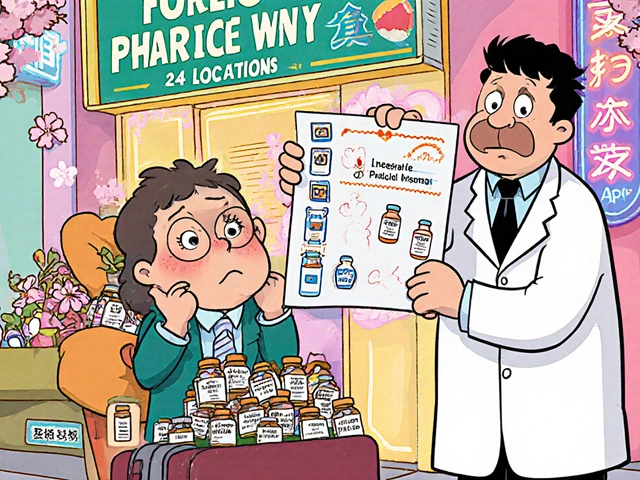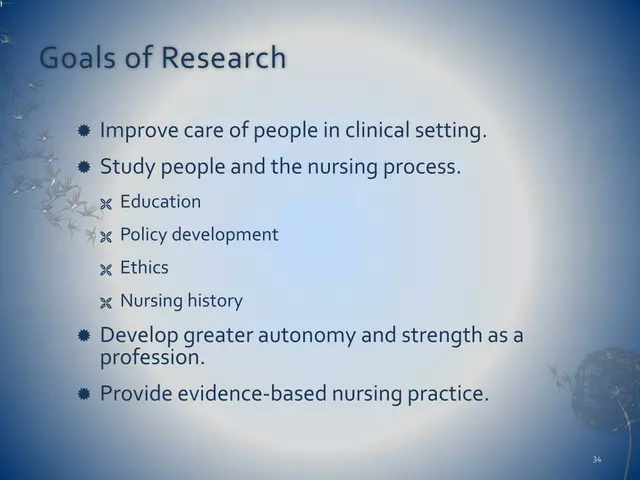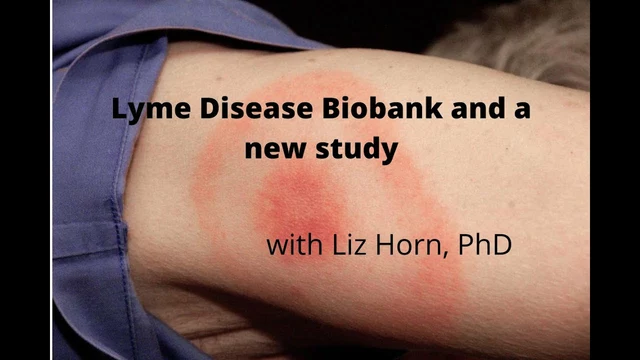One cheap tablet can shift an entire health budget. That’s the strange power of albendazole, a deworming drug that costs cents, moves billions in logistics and labor, and quietly shapes outcomes for schools, hospitals, and pharma supply chains. If you clicked this, you want the straight answer: where does albendazole help, where does it fall short, and what should health systems, buyers, and clinicians actually do with it in 2025?
Quick expectations check: this piece doesn’t sugarcoat the evidence. Albendazole drives big wins against certain parasites and frees up health resources, but it’s not a silver bullet. Coverage, delivery quality, diagnostics, and resistance management decide whether the investment pays off. I’m writing from Perth, where worm infections are rare for most families, but not for everyone-remote communities still fight them-and the global market to treat them is bigger than most people think.
TL;DR: The healthcare impact of albendazole in 2025
- Public health: Albendazole underpins mass drug administration (MDA) for soil-transmitted helminths and lymphatic filariasis; large-scale programs cut worm burden, anemia, and clinic visits when coverage is high (WHO 2023, 2024).
- Costs: The tablet is cheap; delivery is not. Expect 70-90% of total program costs to be logistics, staff, and monitoring. Smart planning beats price shopping.
- Clinical care: In hospitals, albendazole reduces surgeries and long admissions for neurocysticercosis and echinococcosis when paired with imaging and steroids (NEJM, JAMA). Monitoring is key for long courses.
- Market dynamics: It’s generic and widely supplied. Donations cover huge volumes for lymphatic filariasis. Quality control and forecasting matter more than brand.
- Risks: Resistance pressure is real; it’s widespread in livestock and emerging signals exist in human worms. Combine with other drugs where indicated and track efficacy.
What albendazole actually changes in health systems (and how to act on it)
Readers who arrive on this topic usually have a few jobs to get done: 1) forecast and budget for deworming or LF elimination programs; 2) decide where albendazole fits in clinical pathways; 3) build a supply plan without shortages; 4) guard against resistance and program backfire; 5) show measurable value to funders.
Here’s a simple playbook for each role.
For public health program managers (school deworming, LF elimination)
- Decide strategy: single-drug vs combination. For soil-transmitted helminths (STH), single-dose 400 mg albendazole is standard; for tough Trichuris infections, consider pairing with oxantel pamoate based on RCTs showing higher cure rates. For lymphatic filariasis, follow WHO’s IDA guidance (ivermectin + diethylcarbamazine + albendazole) where safe.
- Do the 3C test before ordering: Coverage (can you reach >75% of at-risk), Continuity (can you repeat annually 2-5 years), and Check-up (can you monitor efficacy and adverse events). If any “C” is a no, fix logistics first.
- Budget like delivery matters more than pills: allocate 10-20% for diagnostics and monitoring, 20-30% for training and supervision, the rest for community mobilization and quality assurance. The medicine line item is usually small.
- Pick formulations that fit the field: chewable or crushable tablets for children, clear pictograms, color coding by dose. If kids can’t swallow tablets, coverage drops.
- Plan for safety at scale: contraindicate in known first-trimester pregnancy; screen for acute illness; set up simple referral pathways for adverse events. Train volunteers on what to do, fast.
For clinicians and hospital teams
- Use albendazole where it truly changes outcomes: neurocysticercosis (with steroids and seizure control), echinococcosis (long courses, sometimes perioperative), and strongyloidiasis alternatives where indicated. Follow national guidelines for dosing and duration.
- Cut avoidable admissions with a clean pathway: baseline labs (LFTs, CBC) for prolonged therapy; eye exam if neurocysticercosis is suspected; imaging to confirm cyst location and count; neurosurgery consult when needed.
- Watch drug interactions that raise levels (e.g., cimetidine, praziquantel) and tailor monitoring. Give with a fatty meal to boost absorption when systemic exposure is required.
- Document outcomes you can show: seizure-free days, cyst resolution on imaging, avoided OR time. This is what convinces administrators to fund diagnostics and pharmacy stock.
For procurement and supply chain teams
- Source from WHO-prequalified or stringent authority-approved suppliers. Albendazole is generic; quality varies. Don’t treat all tablets as identical.
- Forecast with a floor and a surge buffer: base on target population, expected coverage, and 10-15% wastage in community campaigns. Add a 3-6 month safety stock to ride out delays.
- Choose pack sizes that reduce field errors: single-dose blister packs for MDA days; hospital bottles for long courses. Barcoding helps reconciliation.
- Temperature and humidity: store below labeled limits; protect from moisture. In the field, cool boxes aren’t overkill in hot seasons.
For policymakers and payers
- Fund delivery, not just drugs: MDA fails when you underinvest in transport, per diems, and supervision. You can’t treat who you can’t reach.
- Require data you can trust: pre- and post-treatment prevalence surveys, adverse event reporting, and periodic efficacy testing (egg reduction rates).
- Back combinations to slow resistance where indicated, and rotate strategies if efficacy metrics slip.
- Link deworming to water, sanitation, and behavior change. Pills help; pipes and toilets finish the job.
For manufacturers and donors
- Stabilize API supply: dual-source from different regions; maintain validated alternatives to avoid single-point failures.
- Invest in child-friendly formulations and clear labeling. That alone lifts coverage and safety in crowded campaigns.
- Publish batch-level quality data and stability studies. Trust is a competitive edge in generics.
- Support resistance surveillance networks-your product’s long-term viability depends on it.

Evidence, economics, and the 2025 market picture
Where the evidence is strong
STH control: Albendazole reliably reduces worm load and anemia in high-burden settings when coverage is high and repeated. WHO’s 2023 guideline keeps it at the center of school-based deworming. Several large trials show better outcomes when MDA is integrated with hygiene and sanitation efforts rather than used alone.
Lymphatic filariasis (LF): Albendazole is a key part of the triple-drug regimen (ivermectin, diethylcarbamazine, albendazole-IDA) endorsed by WHO in 2017 and expanded across many countries by 2024. Field studies in the Pacific and Asia report faster microfilaria clearance with IDA compared to two-drug regimens, shortening the number of MDA rounds needed.
Hospital-level conditions: For neurocysticercosis, randomized studies and meta-analyses in NEJM and JAMA show albendazole with steroids reduces cyst burden and seizures compared with placebo, shifting care from repeated emergent admissions to scheduled outpatient follow-up. For echinococcosis, long-course albendazole (often perioperative) is a standard, reducing recurrence and operative complications when combined with imaging and careful dosing.
Where the evidence is mixed or debated
Long-term developmental gains from routine school deworming are debated. A 2019 Cochrane review questioned broad claims on growth and education outcomes across all settings, while some economic analyses (including re-analyses of Kenyan school programs) found wage and schooling benefits in high-burden areas. The takeaway for 2025: target high-prevalence areas with good coverage and pair pills with sanitation and nutrition if you want durable gains you can measure.
Safety and monitoring
- Short courses are usually well tolerated. GI upset and headache are the common nuisances.
- Long courses need labs. Rare hepatotoxicity and neutropenia mean you monitor LFTs and CBCs.
- Pregnancy: avoid in first trimester; most programs screen or defer. National guidelines vary-follow local policy.
- Levels go up with fatty meals (good for tissue cysts) and with drugs like cimetidine or praziquantel. Know when you want higher exposure.
Resistance risk
Benzimidazole resistance is widespread in livestock parasites (genetic markers like beta-tubulin F200Y). Human helminths show early warning signs in some regions, and efficacy against Trichuris can be modest. The industry response is twofold: combination therapy (e.g., albendazole + oxantel pamoate for whipworm; IDA for LF) and routine efficacy monitoring using egg reduction rate surveys. If cure rates slide, change course fast-don’t keep dosing into resistance.
Market, costs, and supply in 2025
Albendazole is off-patent, manufactured at scale in India, China, and elsewhere. Donation programs from large manufacturers cover hundreds of millions of LF doses yearly under WHO-led initiatives extended toward 2030. For retail, prices vary widely by country and channel; procurement through pooled mechanisms is cheaper and more reliable than spot buys. The real spending sits in distribution, training, and monitoring, not the pills themselves.
| Use case | Typical regimen | Unit medicine cost (generic) | Delivery share of total cost | Key success metric |
|---|---|---|---|---|
| School-based deworming (STH) | 400 mg single dose, once or twice yearly | US$0.02-0.10 per tablet (pooled procurement) | 70-90% | >75% coverage; egg reduction rate ≥95% |
| Lymphatic filariasis (IDA) | Ivermectin + DEC + albendazole, annual | Often donor-funded for LF campaigns | 80-90% | Microfilaria clearance & reduction in transmission |
| Neurocysticercosis | Albendazole 15 mg/kg/day in divided doses, 1-4 weeks + steroids | US$0.20-2.00/day (retail, high-income variation) | Low (hospital setting); diagnostics drive cost | Seizure-free days; cyst resolution on imaging |
| Echinococcosis | 400 mg bid for months (cycles), sometimes perioperative | US$0.40-4.00/day (retail range) | Moderate; monitoring & imaging dominate | Reduced recurrence; surgical avoidance |
Program disruptions and recovery
COVID-19 paused many MDA campaigns in 2020; most countries resumed by 2021-2022. Backlogs changed age distributions and risk. In 2025, planners are still catching up: repeating prevalence surveys, recalibrating doses, and restoring community trust. Plan for surge rounds if data show rebound in infection rates.
Local note from Australia
Most urban Australians won’t spot albendazole on a prescription except for travel or specific parasitic infections. But in remote communities-especially in the north-STH and strongyloides can still be issues. Hospitals stock albendazole for echinococcus and imported neurocysticercosis. It’s a reminder that even in high-income settings, the drug prevents expensive care when used right.
Checklists, examples, and what to do next
Quick checklists
For program leads (STH or LF):
- Targeting: Prevalence maps updated in the last 24 months? Yes/No.
- Delivery: Can you hit >75% coverage with current staff and transport? Yes/No.
- Formulation: Age-appropriate, chewable/crushable tablets ready? Yes/No.
- Safety: Pregnancy screening and adverse event referral plan in place? Yes/No.
- Monitoring: Baseline and follow-up egg counts or antigen tests funded? Yes/No.
- Resistance watch: Plan to check egg reduction rates every 1-2 years? Yes/No.
For hospital teams:
- Diagnosis confirmed by imaging or lab? If uncertain, consult ID/neuro early.
- Long course planned? Order baseline LFT/CBC, schedule repeats.
- Corticosteroid plan documented for neurocysticercosis? Neurology aligned?
- Pharmacy stock: enough for full course; patient counseling materials ready.
- Outcome tracking: seizure log, follow-up imaging dates, return precautions.
For procurement:
- Supplier vetted (WHO PQ or stringent approval)? Certificates on file?
- Buffer stock: 3-6 months on hand? Alternative supplier ready?
- Right pack sizes for field vs hospital use? Barcodes usable in eLMIS?
- Transport and storage mapped for hot/humid seasons? Contingency plan?
Examples that show the range
- LF program acceleration: Pacific islands adopting IDA saw faster microfilaria clearance than previous two-drug regimens, cutting expected years of MDA. That shortens costs and volunteer fatigue.
- Whipworm problem: In districts with stubborn Trichuris, adding oxantel pamoate to albendazole improved cure rates in RCTs. Programs that stuck with single-drug therapy reported lower impact and had to repeat more rounds.
- Hospital budget relief: A neurology unit that standardized neurocysticercosis care with albendazole + steroids + scheduled follow-up reduced emergency readmissions and CT scans per patient-quarter. The savings paid for its patient navigator.
- Supply win: A health ministry shifted from spot purchases to a pooled tender with WHO-prequalified suppliers and cut stockouts from 18% to under 5% while paying similar unit prices.
Heuristics you can use on Monday
- The 80/20 of MDA: 80% of your cost is delivery; 20% or less is the medicine. Don’t underfund the 80.
- Two datapoints beat ten assumptions: always have baseline prevalence and one follow-up survey before declaring success.
- Coverage before cadence: it’s better to do one high-quality round than two weak ones.
- If egg reduction rates fall below ~90-95%, stop and reassess-don’t push more of the same.
Mini‑FAQ
- Is albendazole safe in pregnancy? Avoid in first trimester; consider deferring or alternative per national guidance. Many MDA programs exclude early pregnancy by design.
- Can we use albendazole alone for LF? Not for elimination. Follow WHO: IDA or region-specific two-drug regimens.
- How do we know if resistance is emerging? Watch cure rates and egg reduction rates in sentinel sites. If they drop, confirm with repeat sampling and consider combination therapy.
- What’s the biggest hidden cost? Transport and supervision days. Budget them first, not last.
- Any role in high-income hospitals? Yes-for echinococcus and neurocysticercosis. The drug is cheap compared to imaging and surgery time it can save.
Next steps by persona
Public health program lead (low- to middle-income country):
- Update maps: commission a quick prevalence survey if your data are >24 months old.
- Pick your regimen: standard albendazole for STH; IDA for LF where approved; consider oxantel combination for Trichuris-heavy districts.
- Secure supply: line up two prequalified suppliers and a 6‑month buffer stock.
- Fund delivery first: allocate vehicles, per diems, training, and monitoring before announcing campaign dates.
- Set success metrics: coverage targets, adverse event response time, and egg reduction goals. Publish them before you start.
Hospital pharmacist or ID lead:
- Standardize protocols for neurocysticercosis and echinococcosis, including lab monitoring schedules.
- Build an order set: albendazole + steroids + PPI + seizure management where indicated.
- Educate: one-page patient handout on dosing with food, lab checks, and red flags.
- Audit quarterly: track stockouts, therapy interruptions, and adverse events.
Procurement manager:
- Run a risk assessment of your current supplier list; add an alternate API source.
- Shift from annual to rolling forecast with quarterly true-ups.
- Improve last-mile delivery by bundling with other health commodities to share transport costs.
Clinician in a rural or remote area:
- Keep albendazole on hand for likely parasitic cases; confirm diagnosis when possible.
- For long courses, schedule labs at start and mid-course; set reminders.
- Coordinate with public health if you’re seeing clusters-your clinic data can trigger a local campaign.
Troubleshooting common pitfalls
- Coverage stalls at 60%: simplify consent, bring dosing to schools/markets, use chewables, extend campaign hours. Incentivize volunteers with small stipends.
- Adverse event scares kill momentum: investigate quickly, communicate transparently, and restart only after community meetings and retraining.
- Drug shortage mid-campaign: ration by focusing on highest-prevalence districts and reschedule others with clear dates. Activate alternate supplier.
- Falling efficacy: verify dosing and storage first; if confirmed, switch to combination therapy and consult experts for a resistance surveillance plan.
Credibility notes
Claims in this article reflect guidance and findings from WHO STH and LF guidelines (2017-2024), major RCTs and meta-analyses on albendazole in neurocysticercosis and echinococcosis (NEJM, JAMA), Cochrane reviews on deworming outcomes (2019), and published program reports on IDA in the Pacific and Asia. Donation and market dynamics are drawn from WHO and manufacturer announcements through 2024, with 2025 context based on ongoing program updates. For local practice, follow your national guidelines and consult specialists for complex infections.

 Finding Pharmacies and Medication Help Abroad: A Traveler’s Guide
Finding Pharmacies and Medication Help Abroad: A Traveler’s Guide
 The History and Development of Chlorthalidone
The History and Development of Chlorthalidone
 Buy Cheap Generic Cymbalta Online - Safe Guide & Price Comparison
Buy Cheap Generic Cymbalta Online - Safe Guide & Price Comparison
 Methoxsalen and Collagen Production: What It Does to Your Skin
Methoxsalen and Collagen Production: What It Does to Your Skin
 The Connection Between Tendonitis and Lyme Disease: What You Need to Know
The Connection Between Tendonitis and Lyme Disease: What You Need to Know
Sean Powell
August 30, 2025 AT 00:54Yo, albendazole is the cheap hero that lets schools stay in class without worm drama.
Henry Clay
September 9, 2025 AT 14:24People keep preaching cheap pills but forget the hidden costs-logistics, monitoring, and the ethical burden of pushing drugs on vulnerable kids :)
Isha Khullar
September 20, 2025 AT 03:54In the grand tapestry of public health the tiny tablet becomes a symbol of humanity's struggle against unseen parasites-yet we dance on the edge of complacency.
Lila Tyas
September 30, 2025 AT 17:24Absolutely love the detailed playbook! 🎉 For anyone juggling a deworming campaign, start with the 3C test and you’ll see coverage soar. Remember, a chewable tablet can mean the difference between a child missing school or not.
Mark Szwarc
October 11, 2025 AT 06:54When forecasting, always add a 10‑15 % wastage buffer and a separate 3‑6 month safety stock. This prevents the dreaded mid‑campaign shortage that can derail years of progress.
BLAKE LUND
October 21, 2025 AT 20:24It’s wild how a $0.05 tablet can spark massive supply‑chain gymnastics across continents. Keep the colors bright and the instructions simple-kids notice.
Veronica Rodriguez
November 1, 2025 AT 08:54Don’t forget to pair albendazole with a fatty meal for better absorption when treating tissue cysts 😊. It’s a small tweak that boosts efficacy.
Holly Hayes
November 11, 2025 AT 22:24One mustn’t undervalue the nuanced pharmacokinetic profiles that underpin this ostensibly ‘simple’ medication.
Matthew Shapiro
November 22, 2025 AT 11:54Tracking seizure‑free days after neurocysticercosis treatment provides concrete evidence for administrators to allocate resources.
Julia Phillips
December 3, 2025 AT 01:24The stories from remote Pacific islands show how quickly microfilaria levels can plummet when IDA is correctly implemented. It’s a testament to coordinated effort and trust.
Richa Punyani
December 13, 2025 AT 14:54Dear colleagues, please ensure that your procurement plans incorporate dual‑source API suppliers to mitigate risk. Additionally, a brief refresher training for field volunteers can greatly enhance compliance. Let us move forward together with confidence.
Bhupendra Darji
December 24, 2025 AT 04:24We should also consider local storage conditions; humidity can degrade tablets faster than expected. Sharing best practices across districts helps everyone.